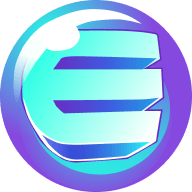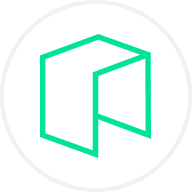In the dynamic landscape of the blockchain industry, different networks offer unique solutions to address the limitations of existing platforms. While Ethereum has enjoyed significant success, it is not without its challenges. Scalability issues, high transaction fees, and delays have hindered its ability to provide seamless transactions. However, amidst the search for alternative blockchains, there are promising contenders often referred to as "Ethereum killers." Qtum (QTUM) is one such blockchain that aims to overcome these limitations and offer innovative features and improved performance.
What is Qtum
Qtum, introduced in 2016, is a unique blockchain project that merges the characteristics of Bitcoin and Ethereum to provide users with a powerful and versatile platform. Acting as a fusion of the two prominent networks, Qtum incorporates the Ethereum Virtual Machine (EVM) into a Bitcoin fork. This integration enables Qtum to leverage Bitcoin's Unspent Transaction Output (UTXO) model while harnessing Ethereum's decentralized application (dApp) capabilities.
To facilitate this amalgamation, Qtum introduced a third layer called the Account Abstract Layer (AAL), which serves as a bridge between the two blockchain networks. This innovative approach allows Qtum to deliver the best features and benefits from both Bitcoin and Ethereum.
Additionally, Qtum implements the Mutualized Proof of Stake (MPoS) algorithm, a simplified and energy-efficient consensus mechanism.
The Qtum team
Qtum was founded by Patrick Dai and a team of experienced blockchain and crypto experts, including Neil Mahi (co-founder and CTO), Miguel Palencia (COO), Brett Fincaryk (Marketing Lead), and David Jaenson (Senior Developer).
How does Qtum work
Qtum was designed with three layers: Bitcoin’s core chain, the EVM, and AAL. Qtum offers users a single and efficient account for all smart contract operations. When a smart contract is processed on the Qtum network, the AAL adds the resulting transactions to a block.
Nodes can validate transactions by staking QTUM. They are duly rewarded for their contributions to the network. The higher the stake, the higher the chances of getting picked to validate transactions.
Qtum’s native token: QTUM
QTUM is Qtum’s native token. It is a utility token that grants access to services such as smart contracts, decentralized application development, and staking.
QTUM tokenomics
According to the project’s whitepaper, QTUM has a total supply of over 100 million tokens. QTUM holders get the benefits of accessing Qtum’s core offerings.
How to stake QTUM
Qtum introduces offline and online staking. Offline staking allows QTUM holders to assign their non-staking wallets to others without necessarily giving up control of their funds. This allows them to be inactive network participants. Online staking, on the other hand, entails active participation — in other words, the validating of Qtum blocks.
You earn via three ways on Qtum: block rewards, transaction fees, and gas fees from smart contracts. Getting started is straightforward. You need to sync your PC with the Qtum blockchain, buy and hold QTUM, then lock for a period.
QTUM use cases
QTUM enables the usage of smart contracts and dApp development. It serves as a means of payment for executing smart contracts and developing and launching dApps. It can be also staked to earn rewards.
QTUM distribution
QTUM coins are distrubted as follows:
- 80 percent was alloted for community participants.
- 20 percent was reserved for the founders, early project supporters, and token development.
What is the future of Qtum
Qtum is committed to providing users with a seamless, instant, and cost-effective transaction experience. The integration of Bitcoin's core, the EVM, and the innovative third-layer protocol helps Qtum to achieve these goals. To solidify its position as a leading dApp network, Qtum recognizes the importance of continuous development. With a steadfast commitment to innovation, Qtum is poised to make significant strides in its quest to provide an unrivaled dApp network.



































